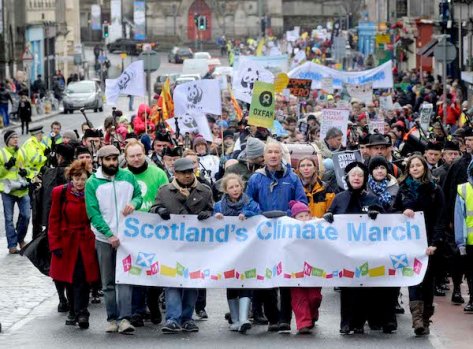A community of students
Learning amongst people from all over the world on the University of Exeter’s Futurelearn Climate Change course has this week allowed me to participate in an exhilarating exchange on ice sheets and glaciers: everyone seemed caught up in the magic of the ice – the ice sheet in Greenland, the instability of the marine ice sheets in Antartica and the astounding changes to the glaciers in the Himalayas and elsewhere. Our focus has been on determining the impact of climate change of course, and distinguishing between the natural processes of mass loss from ice sheets and those related to anthropogenic warming.
In considering these issues, students have debated the evidence extensively and everyone has been keen to share, linking us all into favourite weblinks. It seems I’m not the only one whose imagination is fired up by the inexorable processes of glaciation!
Chilean fjords
I know I’m lucky – I’ve had the chance to see glaciers for real, and it’s not too much of an overstatement to say I’m addicted. My first experience was in Chile where an expedition ship took us up the fjords to see where the Andean glaciers meet the sea. Bobbing about in the sea ice in Zodiacs, we had the privelege of on-the-spot explanations from a geologist as we watched awestruck from a safe distance as the glaciers calved into the sea. This was my vivid introduction to the mysteries of moraines, calving, icebergs, growlers…
Jostedalsbreen
Some years later we visited Norway where we had the opportunity to sail along more fjords; we realised that from the Sognefjorden we could climb up to the Norwegian Glacier Museum at Fjaerland, with its exhibition about climate change, and to the glacier Jostedalsbreen, which is the biggest ice cap in Europe and has many arms. We walked close to Supphellebreen and Boyabreen arms and learned about their changes in size over the last century.
Svalbard
The National Park renewed our excitement and curiosity, but in fact we were about to set out on another voyage of discovery – heading north to Svalbard, where there are glaciers literally everywhere. Svalbard has more than 2,100 glaciers, covering about 59 percent of the total area. Again we set out on an expedition ship which enabled us to get close to some of the glaciers where they reach the sea – although fewer do now, as the ice retreats. Magdalenefjord is spectacular for example and we were able to watch calving from the safety of the ship.
The Arctic is home to a wide range of fauna, thrilling to see in their natural habitat. We learned about the importance of the food chain and how much is dependent on the sea ice. We were often surrounded by amazing creatures, polar bears, walruses, many kinds of seabirds, seals, whales, even including a blue whale!
 .
.
Again we used Zodiacs to enable us to get out on the sea ice, this time to view some of the wildlife close-up. But our ship had to sail beyond 80 degrees North to find any sea ice in June 2013. Since then we’ve watched the sea ice receding from afar through http://polarview.met.no/main.html which keeps archives of sea ice extent around Svalbard and elsewhere in the Arctic. As is widely reported, the sea ice extent in the Arctic has reached record lows.
Sadly we saw the loss of sea ice proving problematic, even in 2013. This was clear when we saw a polar bear unable to gain sufficient sustenance from its usual food source, hunting seals. The bear, to our surprise, managed to climb a high cliff with astonishing agility, searching for eggs in seabird nests on the cliff.
This article represents current concerns about loss of habitat and its effect on the food chain and the whole Arctic ecosystem:
Keeping a balance
During these travels we have learned so much. Each time our listening and reading and watching and discussing has widened our horizons and stimulated us to find out more. We know we are priveleged and that privelege has a price. Since we have become more aware of the impacts of carbon emissions on the climate, our dilemma has increased, and we have been striving to cut our own carbon footprint in as many ways as we can and to make our voices heard in debate about the climate. To travel and learn at first hand? Has the price now become too high? Or can we find ways to compenate?
















